From the Editor - February 2022
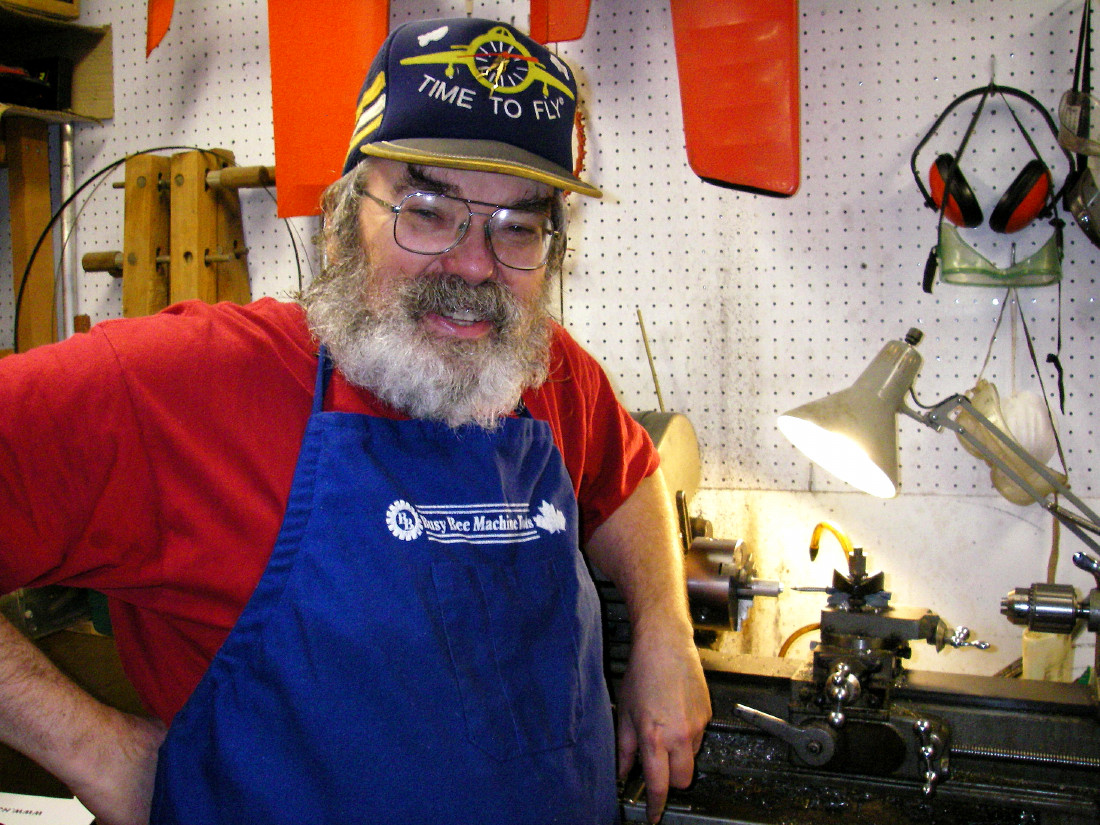 Well, here we are a month into 2022 already, and so far it’s been another “interesting” year! Here in British Columbia, our Christmas/New Year’s snowfall has morphed into rain, at least in the coastal area in which I live. So we now have water, water everywhere, which is admittedly an improvement over snow in that you don‘t have to shovel it! Still, it makes for a bit of a grey world! The problem that we now face is a serious shortage of the mountain snowpack upon which we depend for our summer water supply - dry times are looming .............
Well, here we are a month into 2022 already, and so far it’s been another “interesting” year! Here in British Columbia, our Christmas/New Year’s snowfall has morphed into rain, at least in the coastal area in which I live. So we now have water, water everywhere, which is admittedly an improvement over snow in that you don‘t have to shovel it! Still, it makes for a bit of a grey world! The problem that we now face is a serious shortage of the mountain snowpack upon which we depend for our summer water supply - dry times are looming .............
It’s now pretty clear that thanks to far too many people having surrendered to Covid by selfishly refusing to behave in a responsible manner to limit its spread, the virus has made the jump from pandemic to endemic. This didn’t have to happen, but it’s beyond question now that as societies we lack both the discipline and the moral compass to deal effectively with issues of this sort. So now we’re stuck with this malady. It remains to be seen how this will affect our future lives - my present life is already seriously affected by deaths in the families of three of my acquaintances. That was enough for me, but sadly it may not be over …………… As if this wasn’t enough, we now have to suffer the spectacle of the truly appalling assaults on democracy and the rule of law currently taking place in North America on both sides of the border.
For the moment at least, life goes on at various levels even in the face of these deeply troubling developments. This very much includes a continued interest in model engines among my valued readers!  Indeed, the site usage stats for January 2022 show that the steady increase in the level of interest which I've reported over the past few months has continued unabated! The 604,558 total of hits in January was only a modest increase from the corresponding December figure of 561,350, but the number of resulting visits rose significantly to 6,611 from the December total of 5,742.
Indeed, the site usage stats for January 2022 show that the steady increase in the level of interest which I've reported over the past few months has continued unabated! The 604,558 total of hits in January was only a modest increase from the corresponding December figure of 561,350, but the number of resulting visits rose significantly to 6,611 from the December total of 5,742.
However, the best news of all was the fact that these visits came from a very significantly increased 4,352 unique visitors - the first time ever that the site has attracted over 4,000 distinct individuals in a single month, and by a significant margin at that! Between them, these visitors accessed a massively increased total of 42,379 pages - an increased average of well over 6 pages per visit. Interest in the site and its subject matter appears to be growing - good news for the health of our hobby!
These figures confirm that despite the now-endemic Covid-19 situation and the ongoing societal dysfunction, a significant number of folks are clearly remaining very much engaged with our hobby. Further confirmation comes from the fact that the mail box has remained quite active. I heard from quite a few of you during January, including (in no particular order) Mike Haines, Miles Patience, Kevin Richards, Eric Offen, Ken Croft, Tim Dannels, Gordon Beeby, David Burke, Peter Valicek, Peter Rathke, Chris Murphy, Maris Dislers, Andrew Boddington, Pat Hardy, Dave Zwolak, Larry Lewin, Don Imrie, Mike Noakes, Bob 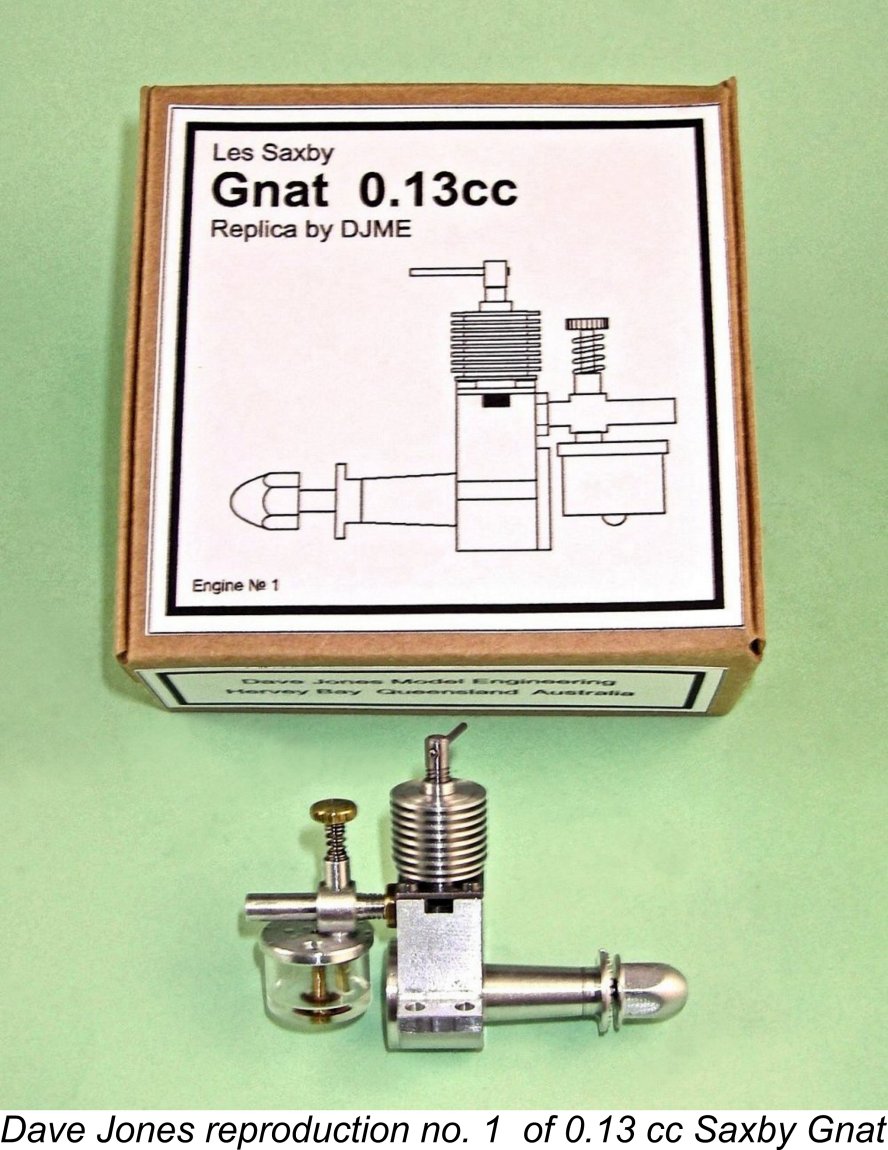 Christ, Ron Hiltz, Ian Sykes, Ates Gurcan, Simon Tweedale and Neill McRae. Apologies to anyone whom I may have inadvertently missed in the crowd, and apologies also to anyone whose message(s) went unanswered - things do slip through the cracks, especially when I’m distracted! The blog site has continued to justify its existence by contributing a small but steady flow of relevant traffic - thanks for that.
Christ, Ron Hiltz, Ian Sykes, Ates Gurcan, Simon Tweedale and Neill McRae. Apologies to anyone whom I may have inadvertently missed in the crowd, and apologies also to anyone whose message(s) went unanswered - things do slip through the cracks, especially when I’m distracted! The blog site has continued to justify its existence by contributing a small but steady flow of relevant traffic - thanks for that.
The mail-box brought some very interesting reading in January, as always. First, there was issue no. 1016 of “AeroModeller” magazine. Apart from the usual mix of well-written articles about various aspects of “traditional” aeromodelling, this issue carries Maris Dislers’ review and test of Dave Jones’ superb re-creation of Les Saxby’s wonderful little 0.13 cc Gnat diesel based on the Mills 1.3 Mk. I. Yours truly played a small role in facilitating this project, since it was my example of the original Saxby Gnat that made the trip down to Australia to be used as the reference for designing the replica. The engine performed at an amazingly high level, doing full justice to the talents of both Les Saxby and Dave Jones. If you’re not an “AeroModeller” subscriber, you’re missing out!
And then there was the arrival of issue no. 265 of Tim Dannels’ invaluable “Engine Collectors’ Journal” (ECJ). The contents of this issue clearly reflect my own support for Tim's ongoing efforts! One of the lead articles presents my history of the excellent Torpedo Special .29 cuin twin-stack  rear exhaust model of the early post-WW2 years. There’s also my story about the vicissitudes of learning to start a first diesel and the effect it had on my Dad! The Merlin Super B serial number survey was instigated as a result of my interest in learning more about these engines for a potential future article. Finally, there’s a piece about a very unusual Fox 35 stunt motor of 1951 vintage which I recently acquired. This one stands out a mile by featuring an 8-bolt head! Before you ask, it’s not a modified standard head - it was cast that way! Tim and I are hoping that some ECJ reader can clarify its origin. As I’ve said many times, to get all of my writing you need to be an ECJ subscriber!
rear exhaust model of the early post-WW2 years. There’s also my story about the vicissitudes of learning to start a first diesel and the effect it had on my Dad! The Merlin Super B serial number survey was instigated as a result of my interest in learning more about these engines for a potential future article. Finally, there’s a piece about a very unusual Fox 35 stunt motor of 1951 vintage which I recently acquired. This one stands out a mile by featuring an 8-bolt head! Before you ask, it’s not a modified standard head - it was cast that way! Tim and I are hoping that some ECJ reader can clarify its origin. As I’ve said many times, to get all of my writing you need to be an ECJ subscriber!
During the course of some research into the K&B Tornado engine, I found that I needed a few glow-heads for the overbored .060 cuin. Tornado model. I converted a well-graunched and burned-out head to accept a turbo plug, which returned my well-used example to operational status. However, I still wanted to try an original.
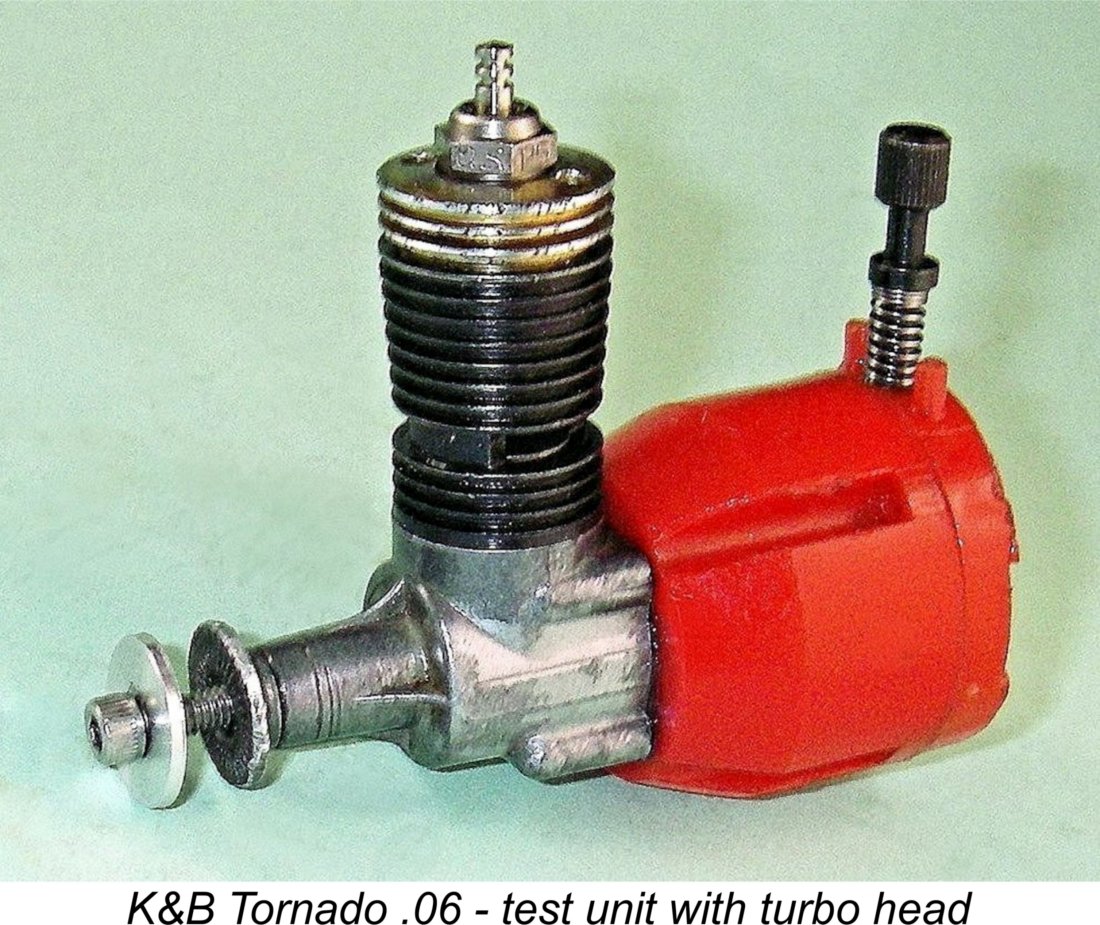 Amazingly enough, new heads for this and a number of other classic models remain available today from the Model Engine Company of America (MECOA) of 16015 Adelante Street, Irwindale, California, 91702 USA. It's impossible in a few paragraphs to describe the range of engine-related products which this company offers. MECOA owns the K&B, Webra, Fox and HB lines among others and is able to offer specific engines in those and other ranges as well as many spare parts for them. A number of fine replicas of classic engines are also produced as time and circumstance permit. The company sells a wide variety of glow plugs, including glow-heads for certain long-discontinued powerplants such as the K&B Tornado .060. An amazing array of accessories is also on offer.
Amazingly enough, new heads for this and a number of other classic models remain available today from the Model Engine Company of America (MECOA) of 16015 Adelante Street, Irwindale, California, 91702 USA. It's impossible in a few paragraphs to describe the range of engine-related products which this company offers. MECOA owns the K&B, Webra, Fox and HB lines among others and is able to offer specific engines in those and other ranges as well as many spare parts for them. A number of fine replicas of classic engines are also produced as time and circumstance permit. The company sells a wide variety of glow plugs, including glow-heads for certain long-discontinued powerplants such as the K&B Tornado .060. An amazing array of accessories is also on offer.
One could go on and on, but the truth is that only a visit to MECOA's outstanding website will reveal the full scope of 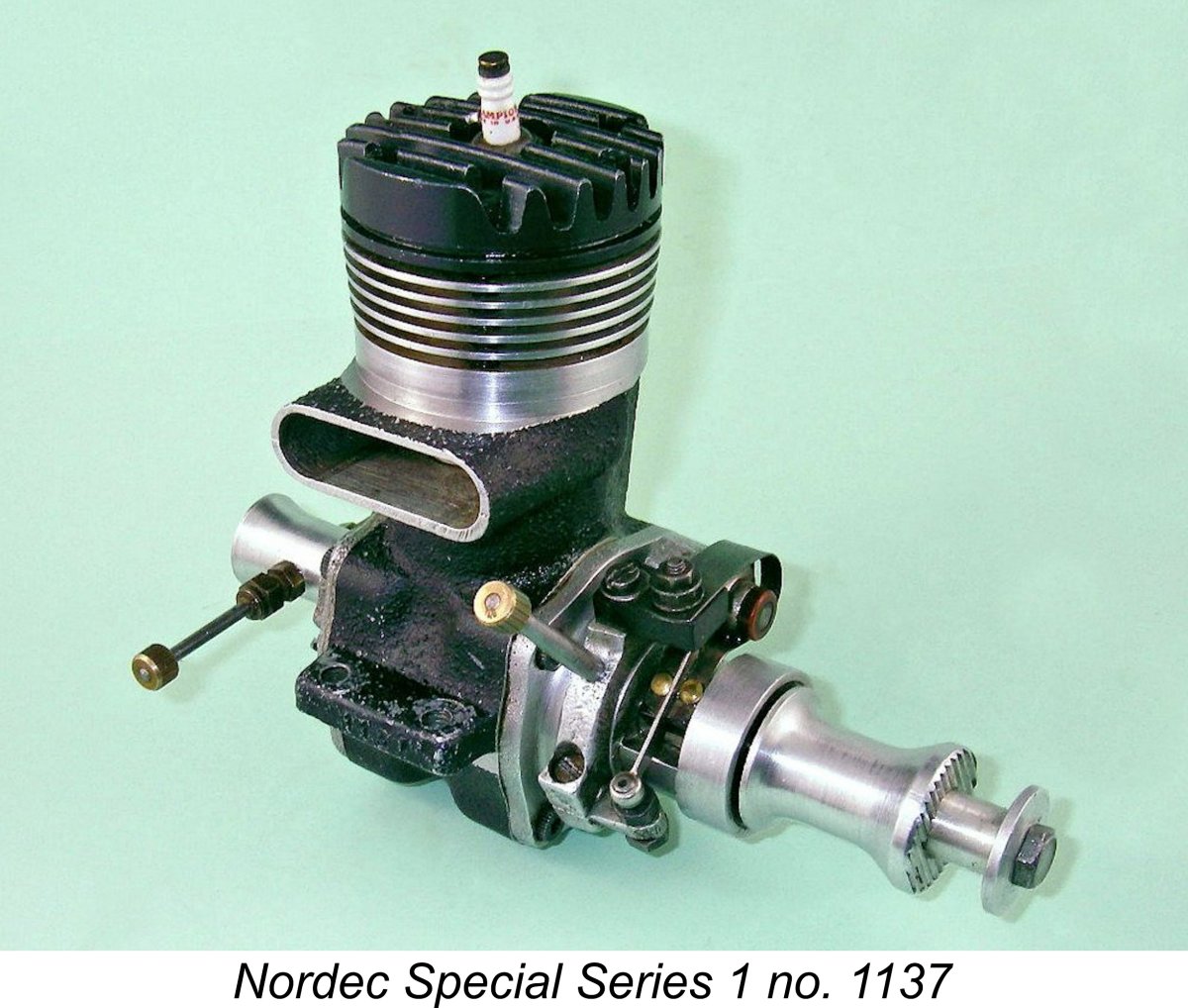 the products offered by this company. To encourage such visits, I’ve added MECOA to my “Sources” listings. I have found them to be a very ethical company which provides excellent service to its customers. I strongly recommend a visit - you'll be amazed!
the products offered by this company. To encourage such visits, I’ve added MECOA to my “Sources” listings. I have found them to be a very ethical company which provides excellent service to its customers. I strongly recommend a visit - you'll be amazed!
Speaking of sources, a few years back I took over custody of a large stash of components for the famous British Nordec 60 engines from my valued mate Alan Strutt. These were saved by a friend of Alan's when the factory ended model engine production way back when. I mentioned this at the time, but it now seems appropriate to remind you all that I still have these components and am happy to make them available to any Nordec owner at no charge other than the cost of mailing. I'd far rather see them put to use than end up in the recycling bin! Contact me to see if I have what you need.
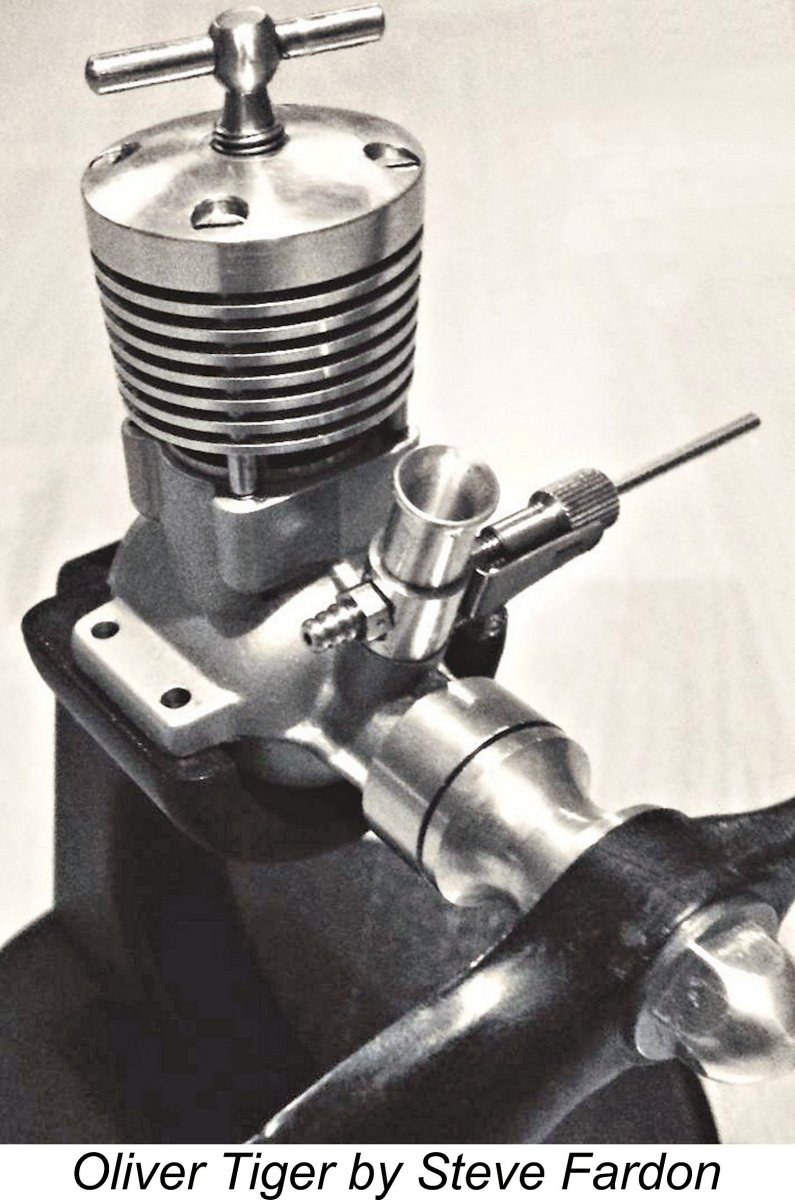 David Burke of Australia drew my attention to the fact that production of the iconic Oliver Tiger engines has resumed yet again! The engines are now produced by Steve Fardon, a former associate of the late Tom Ridley who originally took over the rights, designs and tooling for these engines from the late John Oliver. This iconic all-British brand is now back in business with all of the original Oliver tooling and the knowledge passed down to Steve from John Oliver and later Tom Ridley. As always, the engines are made to order in small batches, with engine numbers carrying on from where they left off, stamped with those 80 year old Oliver number punches. All engines are individually run and evaluated prior to dispatch. If you fancy an opportunity to experience a superb brand-new example of one of these classics, check out the J. Oliver Engines website - well worth a look!
David Burke of Australia drew my attention to the fact that production of the iconic Oliver Tiger engines has resumed yet again! The engines are now produced by Steve Fardon, a former associate of the late Tom Ridley who originally took over the rights, designs and tooling for these engines from the late John Oliver. This iconic all-British brand is now back in business with all of the original Oliver tooling and the knowledge passed down to Steve from John Oliver and later Tom Ridley. As always, the engines are made to order in small batches, with engine numbers carrying on from where they left off, stamped with those 80 year old Oliver number punches. All engines are individually run and evaluated prior to dispatch. If you fancy an opportunity to experience a superb brand-new example of one of these classics, check out the J. Oliver Engines website - well worth a look!
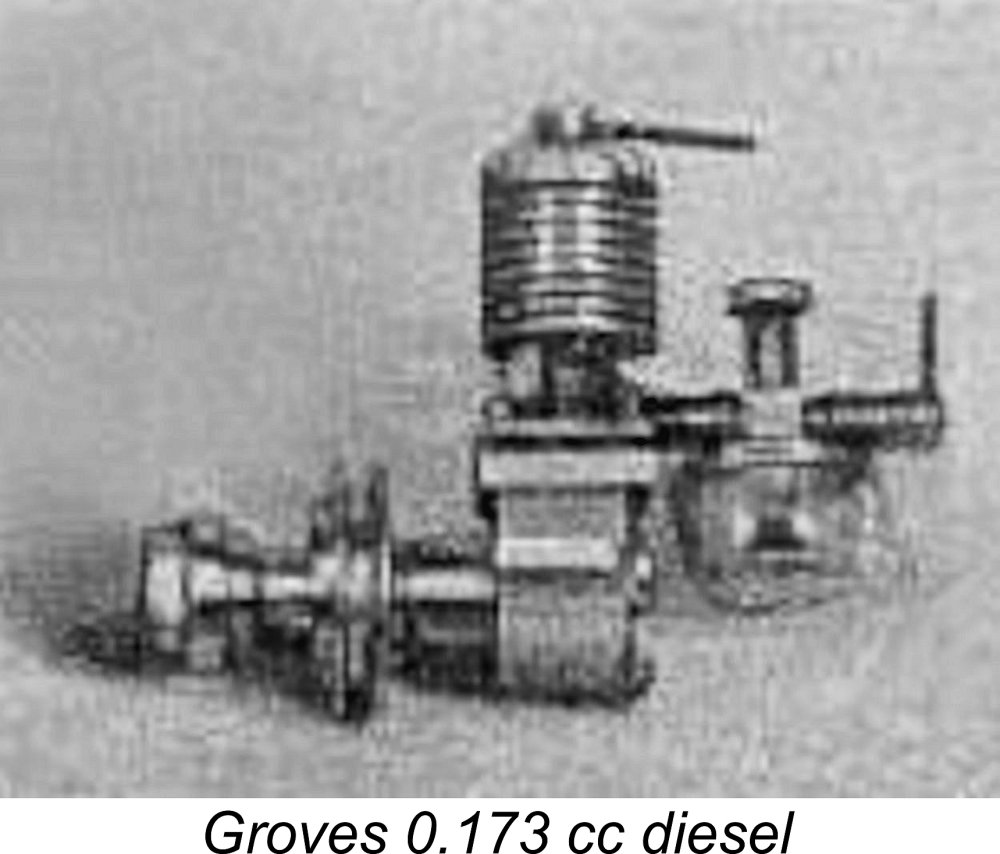 As usual, my good mate Maris Dislers had several useful contributions to make to this month’s edition. While searching through the pages of Ron Chernich’s invaluable “Model Engine News” (MEN) website, he came across an entry for a long-forgotten British model engineer named H. H. Groves. It turns out that Groves was among the pioneers of model diesel development in early post-WW2 Britain. Among many other creations, in 1946 he constructed a 1/3 linear scale version of L. H. Sparey’s well-known 5 cc diesel. This little gem had a displacement of 0.173 cc, placing it squarely into the “micro diesel” category. I’ve added a few paragraphs on this noteworthy effort to my existing article on the classic micro-diesels, with my sincere thanks to Maris.
As usual, my good mate Maris Dislers had several useful contributions to make to this month’s edition. While searching through the pages of Ron Chernich’s invaluable “Model Engine News” (MEN) website, he came across an entry for a long-forgotten British model engineer named H. H. Groves. It turns out that Groves was among the pioneers of model diesel development in early post-WW2 Britain. Among many other creations, in 1946 he constructed a 1/3 linear scale version of L. H. Sparey’s well-known 5 cc diesel. This little gem had a displacement of 0.173 cc, placing it squarely into the “micro diesel” category. I’ve added a few paragraphs on this noteworthy effort to my existing article on the classic micro-diesels, with my sincere thanks to Maris.
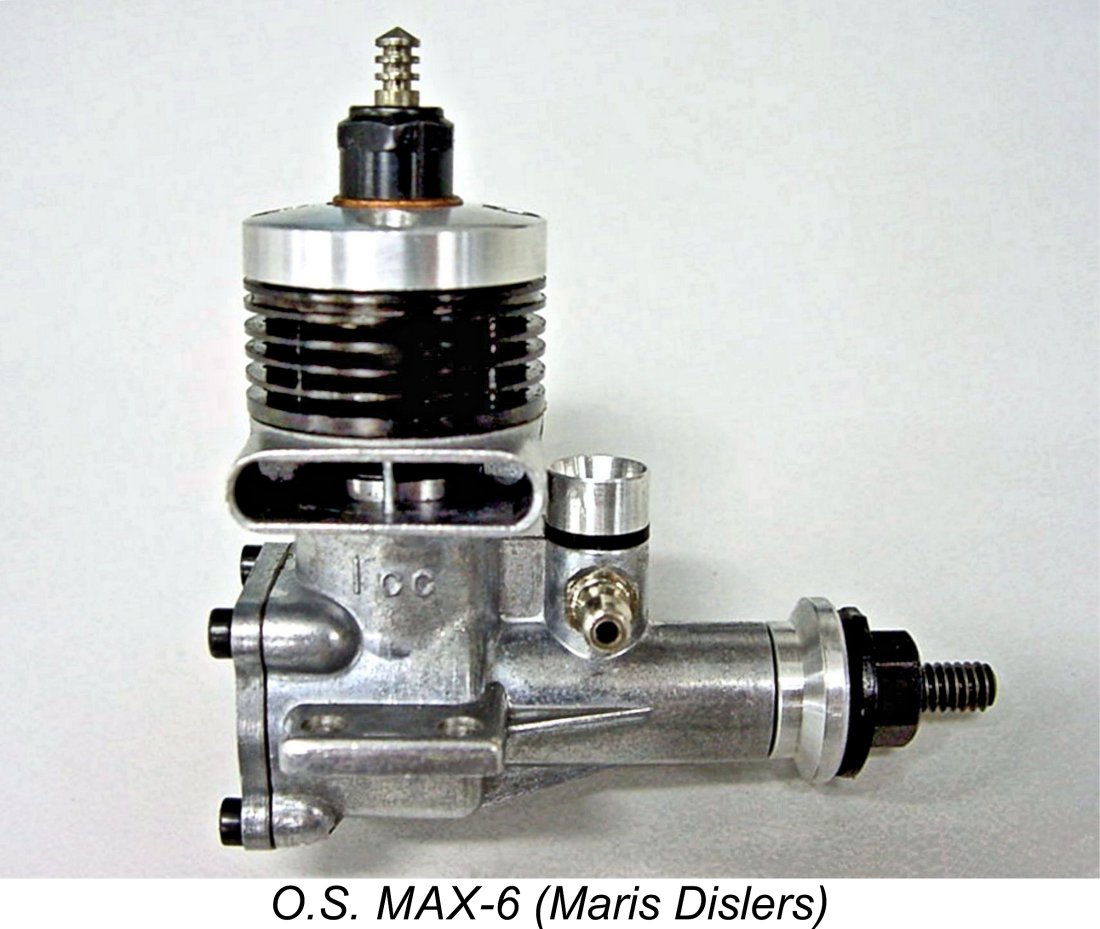 This was by no means Maris’s only contribution to this month’s edition. He recently had an opportunity to test an engine of some historical significance - the cute little 1 cc O.S. MAX-6 glow-plug unit of 1961. This was the smallest engine ever to be manufactured by the famous O.S. company of Osaka, Japan. It proved to be a fine-handling little motor with an excellent performance. However, it was not eligible for the .049 ½A class which was then so popular, also costing more than most of its similarly-sized competitors. As a result, relatively few examples were produced, especially by O.S. standards. Thanks to its relative rarity as well as its status as the smallest-ever O.S. model, it remains an eminently collectible model today. Maris’s review of the O.S. MAX-6 appears as a third bonus article this month - thanks, mate!
This was by no means Maris’s only contribution to this month’s edition. He recently had an opportunity to test an engine of some historical significance - the cute little 1 cc O.S. MAX-6 glow-plug unit of 1961. This was the smallest engine ever to be manufactured by the famous O.S. company of Osaka, Japan. It proved to be a fine-handling little motor with an excellent performance. However, it was not eligible for the .049 ½A class which was then so popular, also costing more than most of its similarly-sized competitors. As a result, relatively few examples were produced, especially by O.S. standards. Thanks to its relative rarity as well as its status as the smallest-ever O.S. model, it remains an eminently collectible model today. Maris’s review of the O.S. MAX-6 appears as a third bonus article this month - thanks, mate!
Which brings us to this month’s all-new lead article! This time we head back to the 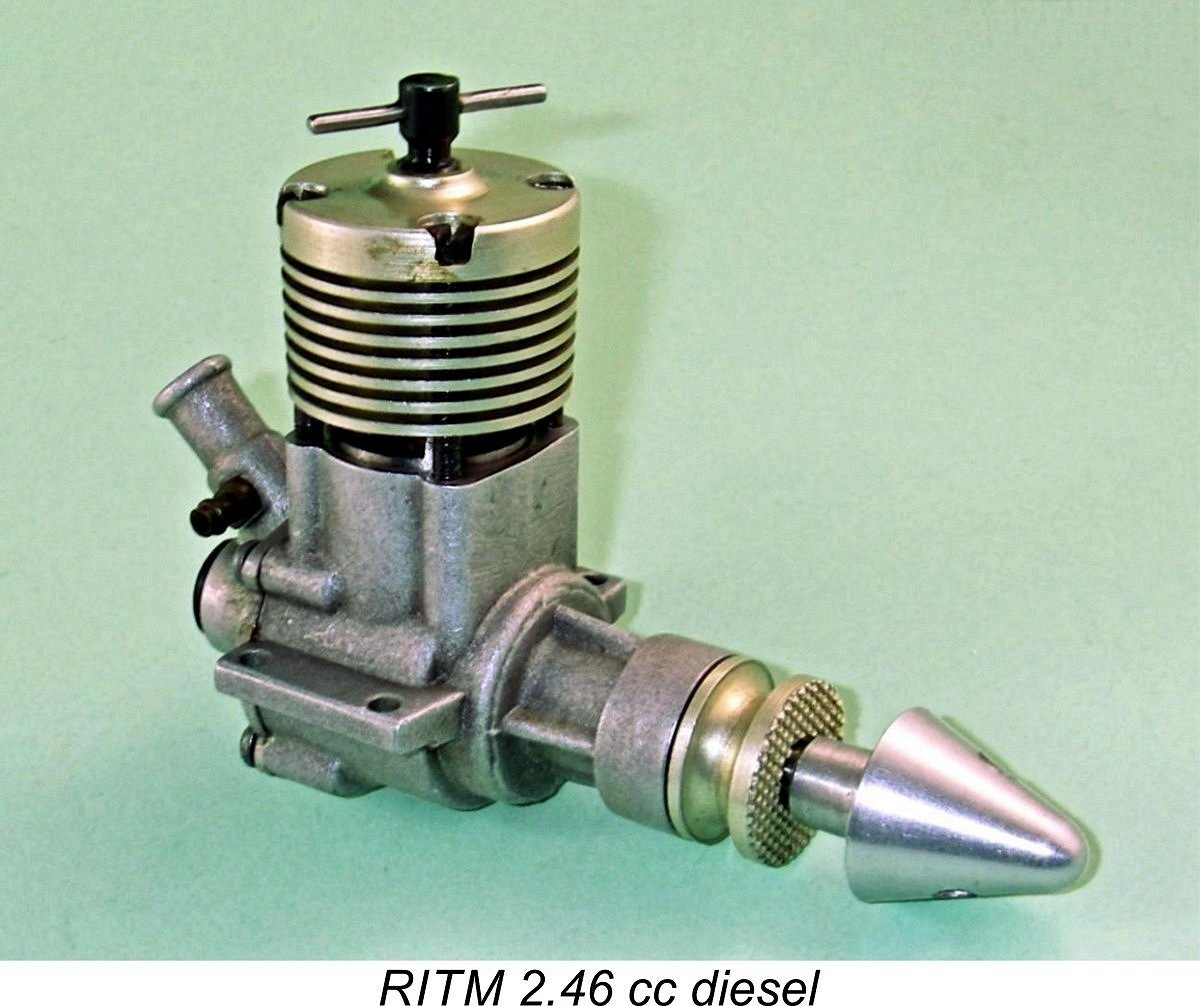 former USSR to sneak another peek behind the Iron Curtain which was very much intact at the time. We’ll share a good look at the RITM (or Rhythm if you insist) 2.5 cc diesel from Ukraine. This drum-valve twin ball-race diesel was designed in 1959-60 by future team race great Boris Krasnoroutski of Kiev. As originally designed with Oliver cylinder porting, it was a very competitive team race powerplant by 1960 standards, finishing a very creditable 7th in that year’s world championship in relatively inexperienced hands. However, by 1962 when it finally entered series production it had fallen behind the ever-improving engine designs from other sources. Even so, it was a far better powerplant than its one published test would suggest, being a very acceptable “clubman’s” team race diesel with which an aspiring competitor could gain valuable experience. The new article sets out its entire start-to-finish history along with a far more representative test.
former USSR to sneak another peek behind the Iron Curtain which was very much intact at the time. We’ll share a good look at the RITM (or Rhythm if you insist) 2.5 cc diesel from Ukraine. This drum-valve twin ball-race diesel was designed in 1959-60 by future team race great Boris Krasnoroutski of Kiev. As originally designed with Oliver cylinder porting, it was a very competitive team race powerplant by 1960 standards, finishing a very creditable 7th in that year’s world championship in relatively inexperienced hands. However, by 1962 when it finally entered series production it had fallen behind the ever-improving engine designs from other sources. Even so, it was a far better powerplant than its one published test would suggest, being a very acceptable “clubman’s” team race diesel with which an aspiring competitor could gain valuable experience. The new article sets out its entire start-to-finish history along with a far more representative test.
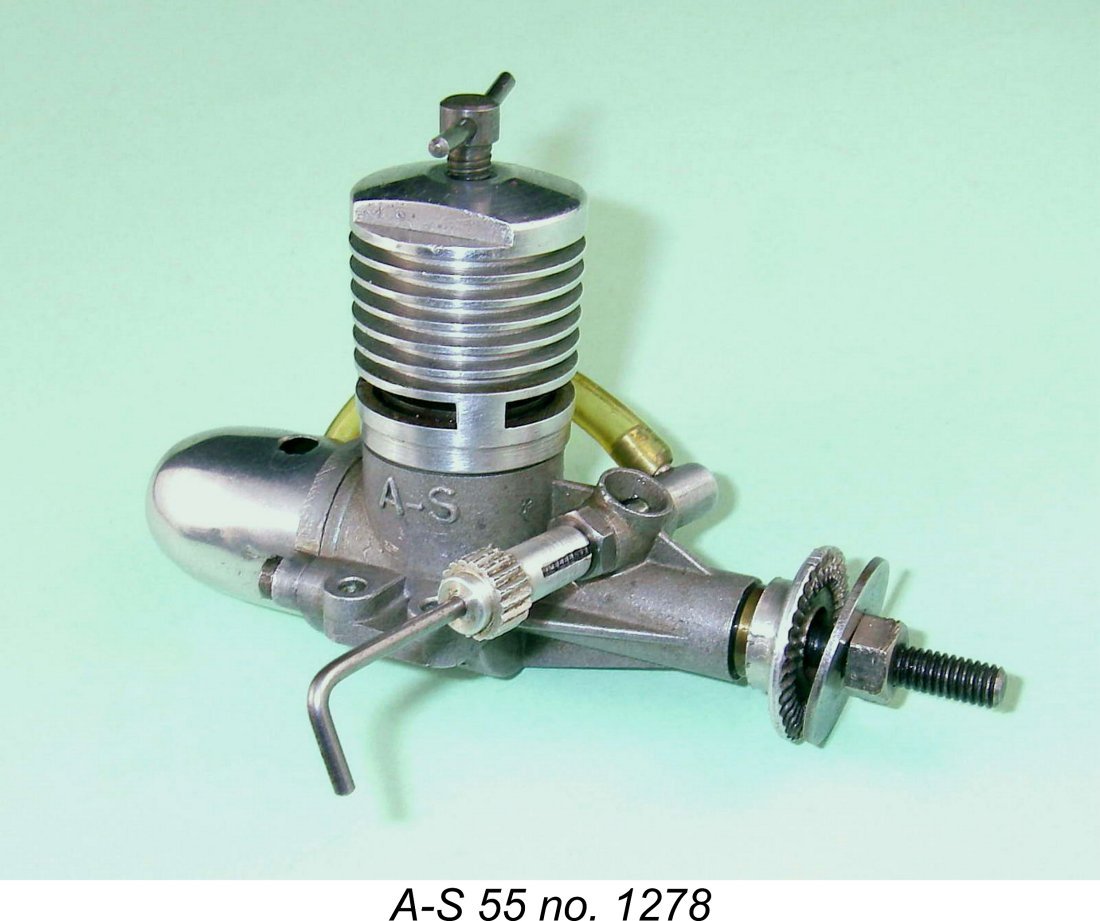 The MEN transfer article for the month takes us back to England for a detailed look at an often-overlooked gem - the superb little 0.55 cc A-S 55 diesel from Milton in Berkshire, England. This was the final model engine design to come off the drawing board of Alan Allbon, one of England’s most respected and influential model engine designers whose story I’ve recounted elsewhere. The A-S 55 was a fitting swansong, being widely regarded as the best ½ cc diesel ever to appear in Britain prior to the advent of the PAW 55. Its story is well worth preserving.
The MEN transfer article for the month takes us back to England for a detailed look at an often-overlooked gem - the superb little 0.55 cc A-S 55 diesel from Milton in Berkshire, England. This was the final model engine design to come off the drawing board of Alan Allbon, one of England’s most respected and influential model engine designers whose story I’ve recounted elsewhere. The A-S 55 was a fitting swansong, being widely regarded as the best ½ cc diesel ever to appear in Britain prior to the advent of the PAW 55. Its story is well worth preserving.
For next month, I plan to present an all-new feature article on the various Elfin 149 PB replicas having their origins in Australia. There were three distinct variants of such replicas. The first of these was a very well-made version produced in very small numbers by Ivor F, Gordon 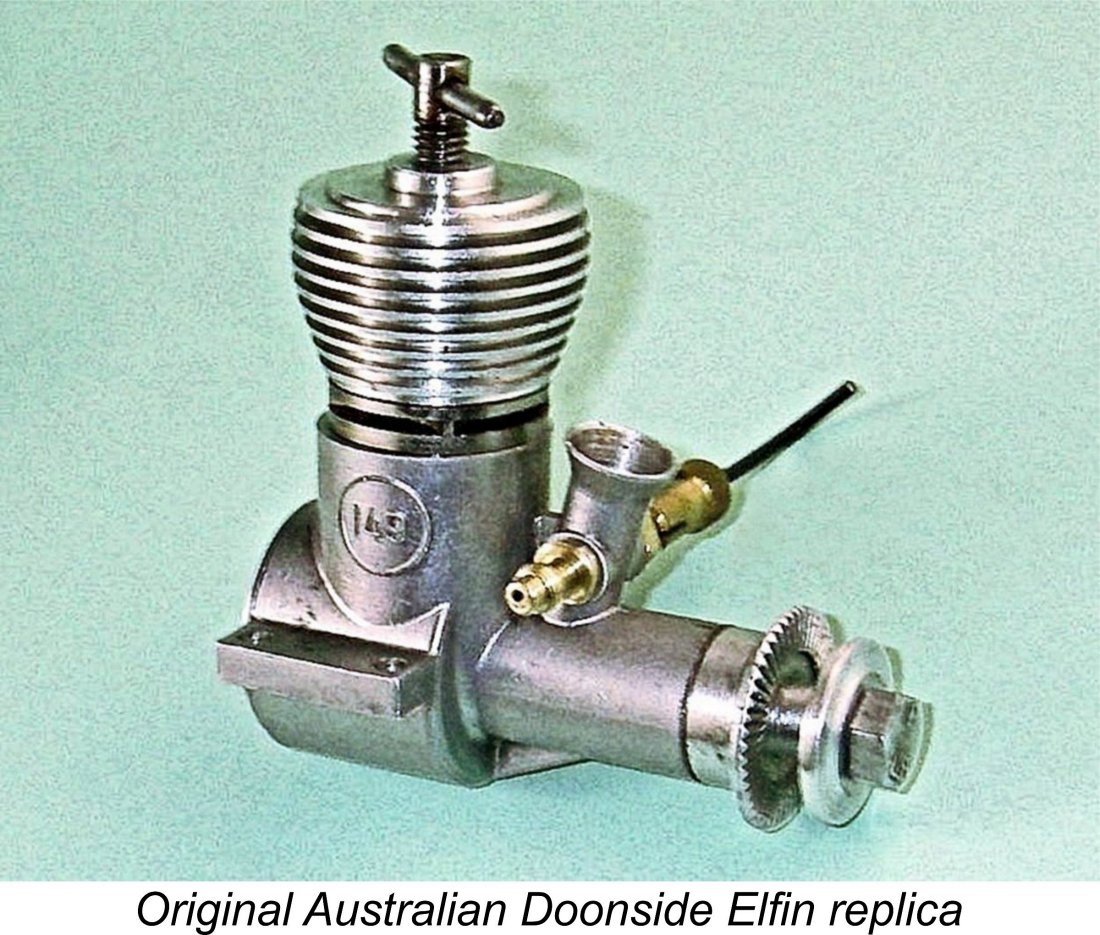 Burford and a few others as the Doonside Elfin 149 replica. This very rare variant is seen at the right.
Burford and a few others as the Doonside Elfin 149 replica. This very rare variant is seen at the right.
For a number of reasons, this project stalled after fewer than 100 examples were produced. A far larger number of engines resulted from an initiative by Ilya Leydman of the Sydney-based Macheast company. These appeared in both iron-and-steel and ABC variants. A few of them were tested and certified by Ivor F, subsequently being sold as Series 2 Doonside Elfins, while the rest were sold by Macheast. All of these models will be reviewed and tested in next month’s article.
In keeping with what has by now become a bit of a pattern, I also plan to present yet another MEN transfer article. This one will focus on the deservedly famous albeit short-lived Yulon engines from England. These engines were notable for their light weight, their better-than-average outputs by the standards of their day and their extremely “penetrating” 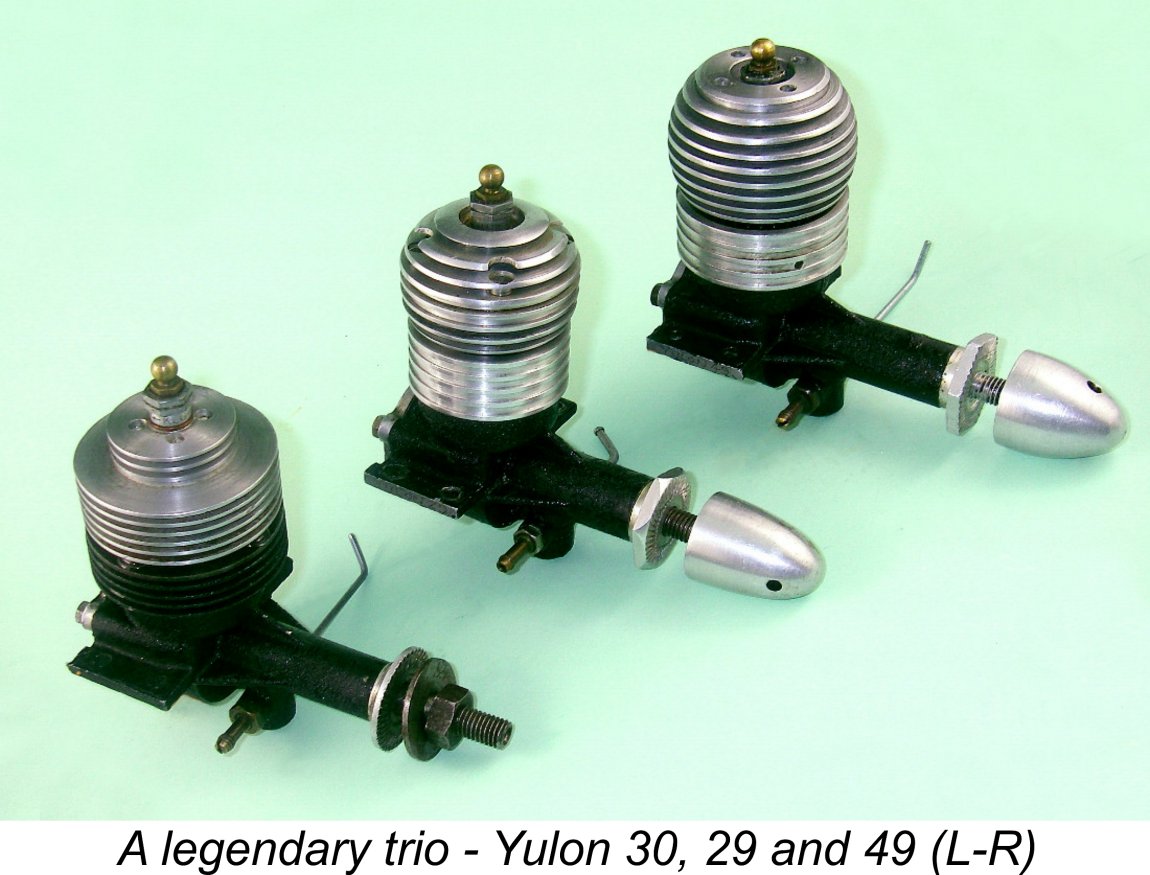 exhaust notes! They achieved a considerable degree of competition success, but appear to have been driven off the market by the outcome of the infamous Purchase Tax case which I’ve discussed in detail elsewhere.
exhaust notes! They achieved a considerable degree of competition success, but appear to have been driven off the market by the outcome of the infamous Purchase Tax case which I’ve discussed in detail elsewhere.
I should point out here that the Yulon article will be unusual in that it will be as much about an aeromodelling genre as a model engine range. This is because the telling of the Yulon story is only possible in the context of an account of the British control-line stunt category as it then stood. The article will therefore incorporate the full story of the development of stunt flying in Britain in the 1940’s and 1950’s. It’s also a story with a great deal of human interest, which always resonates with me!
I think that about does it for this edition. All being well, I'll be back to you with another edition on or about March 1st, 2022. Meanwhile, please accept my best wishes for continuing to steer a safe path through the now-endemic Covid threat and the accompanying societal dysfuntion to get the best of what life has to offer under present circumstances. Take care and stay well - don’t support the anti-democracy crowd, minimize your contact with the covidiots, get vaccinated to the max, continue to exercise caution and trust your own informed opinions rather than those of the covidiots and democrappers. Their focus is entirely on themselves, not on you - ignore them, make up your own mind based on authoritative current information and act accordingly! It’s your future, and that of your kids and grand-kids ……….
Cheers,
Adrian Duncan
British Columbia, Canada
___________________________________
Note regarding material to be found on this site - unless specifically otherwise noted, all images and text which appear on this site are my own work, and I hereby assert my right to be recognized as the originator of this material. For the record, this material is made freely available to all upon two firm conditions:
- No commercial use of any kind is to be made of any of the images or text posted on this site without my express written consent.
- No use of any kind, commercial or otherwise, is to be made of any material published in any form on this site without full and open acknowledgement of the source.
Adrian C. Duncan
British Columbia, Canada

 Well, here we are a month into 2022 already, and so far it’s been another “interesting” year! Here in British Columbia, our Christmas/New Year’s snowfall has morphed into rain, at least in the coastal area in which I live. So we now have water, water everywhere, which is admittedly an improvement over snow in that you don‘t have to shovel it! Still, it makes for a bit of a grey world! The problem that we now face is a serious shortage of the mountain snowpack upon which we depend for our summer water supply - dry times are looming .............
Well, here we are a month into 2022 already, and so far it’s been another “interesting” year! Here in British Columbia, our Christmas/New Year’s snowfall has morphed into rain, at least in the coastal area in which I live. So we now have water, water everywhere, which is admittedly an improvement over snow in that you don‘t have to shovel it! Still, it makes for a bit of a grey world! The problem that we now face is a serious shortage of the mountain snowpack upon which we depend for our summer water supply - dry times are looming .............  Indeed, the site usage stats for January 2022 show that the steady increase in the level of interest which I've reported over the past few months has continued unabated! The 604,558 total of hits in January was only a modest increase from the corresponding December figure of 561,350, but the number of resulting visits rose significantly to 6,611 from the December total of 5,742.
Indeed, the site usage stats for January 2022 show that the steady increase in the level of interest which I've reported over the past few months has continued unabated! The 604,558 total of hits in January was only a modest increase from the corresponding December figure of 561,350, but the number of resulting visits rose significantly to 6,611 from the December total of 5,742. 

 Amazingly enough, new heads for this and a number of other classic models remain available today from the Model Engine Company of America (MECOA) of 16015 Adelante Street, Irwindale, California, 91702 USA. It's impossible in a few paragraphs to describe the range of engine-related products which this company offers. MECOA owns the K&B, Webra, Fox and HB lines among others and is able to offer specific engines in those and other ranges as well as many spare parts for them. A number of fine replicas of classic engines are also produced as time and circumstance permit. The company sells a wide variety of glow plugs, including glow-heads for certain long-discontinued powerplants such as the K&B Tornado .060. An amazing array of accessories is also on offer.
Amazingly enough, new heads for this and a number of other classic models remain available today from the Model Engine Company of America (MECOA) of 16015 Adelante Street, Irwindale, California, 91702 USA. It's impossible in a few paragraphs to describe the range of engine-related products which this company offers. MECOA owns the K&B, Webra, Fox and HB lines among others and is able to offer specific engines in those and other ranges as well as many spare parts for them. A number of fine replicas of classic engines are also produced as time and circumstance permit. The company sells a wide variety of glow plugs, including glow-heads for certain long-discontinued powerplants such as the K&B Tornado .060. An amazing array of accessories is also on offer.


 This was by no means Maris’s only contribution to this month’s edition. He recently had an opportunity to test an engine of some historical significance - the cute little 1 cc O.S. MAX-6 glow-plug unit of 1961. This was the smallest engine ever to be manufactured by the famous O.S. company of Osaka, Japan. It proved to be a fine-handling little motor with an excellent performance. However, it was not eligible for the .049 ½A class which was then so popular, also costing more than most of its similarly-sized competitors. As a result, relatively few examples were produced, especially by O.S. standards. Thanks to its relative rarity as well as its status as the smallest-ever O.S. model, it remains an eminently collectible model today. Maris’s
This was by no means Maris’s only contribution to this month’s edition. He recently had an opportunity to test an engine of some historical significance - the cute little 1 cc O.S. MAX-6 glow-plug unit of 1961. This was the smallest engine ever to be manufactured by the famous O.S. company of Osaka, Japan. It proved to be a fine-handling little motor with an excellent performance. However, it was not eligible for the .049 ½A class which was then so popular, also costing more than most of its similarly-sized competitors. As a result, relatively few examples were produced, especially by O.S. standards. Thanks to its relative rarity as well as its status as the smallest-ever O.S. model, it remains an eminently collectible model today. Maris’s 
 The MEN transfer article for the month takes us back to England for a detailed look at an often-overlooked gem - the superb little 0.55 cc
The MEN transfer article for the month takes us back to England for a detailed look at an often-overlooked gem - the superb little 0.55 cc 
